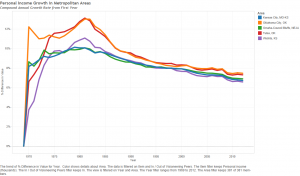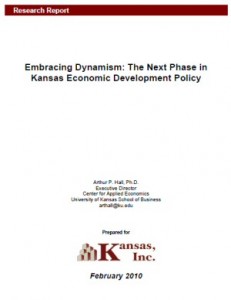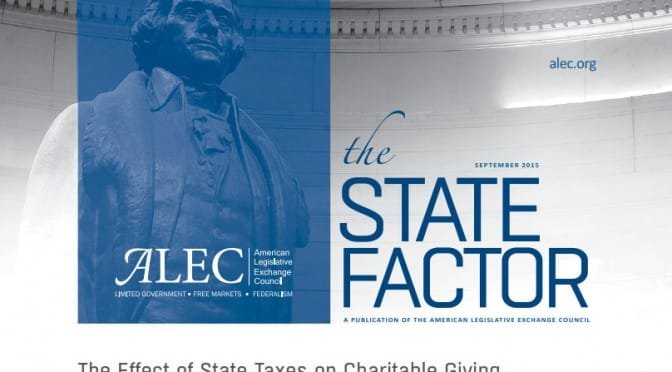To an appreciative Saturday evening audience, candidate for the Republican party nomination for United States House of Representatives from the fourth district of Kansas Jim Anderson laid out in detail his political positions and his plans for Congress.
Anderson spoke as part of a series of events featuring Alan Keyes, who spoke after Anderson.
Anderson told the audience that he is “working hard to earn your support to become your representative, not a politician.” He said that he is “a man of the people, a Reagan conservative, who possesses the God-given gift of plain old common sense, which is clearly absent in Washington today.”
Tracing some of the history of the United States, Anderson expressed his concern that our country is moving towards socialism, a system that he said is “intrinsically bad” and immoral. 2010, he said, is our time to change the direction of the country.
Originally, individuals were empowered, but that has changed. Anderson’s conservative platform includes liberty, freedom, free markets, limited taxation through the Fair Tax, limited government with rights retained at the local level by states and citizens, strong national defense, and family values. These are the same values of the founding fathers, he said, and he supports legislation restoring these.
A strong economy is needed, Anderson said. This includes a complete overhaul of the tax system, a return to federal spending discipline, balancing the budget, and reducing the size of government. Entitlements need to be brought under control, and eventually privatized.
Taxes, he said, drive a wedge between those who wish to transact, and therefore reduces economic activity. The cost of complying with our present tax system is huge, too. The progressive income tax system places a large burden on high earners, while 50% don’t pay any income taxes.
Anderson said that he will fight to lower taxes, and that tax reform is needed now. He supports the Fair Tax, which would replace the income tax with a consumption tax. He would also eliminate the death or inheritance tax, and taxes on capital gains.
Another tax Anderson said must be defeated is climate change legislation. Man-made global warming is not a foregone conclusion, he said, and the radical left uses global warming to reduce the prosperity of global economic powers. Cap-and-trade would be a huge tax increase that would kill jobs across the country and in our district.
Anderson said that our national debt is a problem, leaving a burden on future generations. The present national debt is $120,000 per family, with the debt forecast to increase over the next decade. “We should not expect future generations to live under a shadow of debt through socialism,” he said.
Concerning the federal stimulus efforts, Anderson criticized the high cost of each job saved or created, and the high per-cost of the cash for clunkers program, which has been estimated at as much as $24,000 per car sold, when considering marginal effects.
Anderson said he would oppose new government spending that isn’t offset by spending cuts elsewhere, and he would eliminate all earmarks.
The Federal Reserve, Anderson said, has “been running the printing presses at record levels” to enable government overspending, and mask the structural problems in our country. He supports H.R. 1207, which calls for an audit of the Federal Reserve.
Existing entitlement programs are ticking time bombs, Anderson said, and must be made solvent. For those nearing retirement age, he would keep the existing benefits, but for others, the benefits would be gradually reduced.
Anderson said that free markets are the “most efficient mechanism,” and can provide the answer to several problem areas. On health care, he said we need to enable consumer choice, enact tort reform, and reject a government-run health care system. The move towards a government-run system is more about “control of every facet of our lives” rather than health. More freedom and markets is the solution to health care, he said.
On education, Anderson said that we spend more money on education than any other nation, but we continue to fall farther behind. He supports less federal and state control over education, and also the voucher system. Competition will improve performance by giving parents a choice. Good teachers have not received the compensation they deserve, and markets will allow good teachers to earn what they deserve. Standards need to be strengthened, too.
On energy issues, Anderson said that renewable energy sources such as solar and wind power are not consistent, and we’re going to be relying on hydrocarbons as a source of energy for some time to come. Taxpayers should not continue to subsidize energy sources with no viable economic future. We need to expand our use of coal and nuclear power, and increase our drilling efforts, he said.
It makes no sense to pay farmers not to grow, so agriculture subsidies should be eliminated, Anderson said. Farmers should be able to farm the way they see best.
Progressive liberals, Anderson said, have an agenda to fully transform our society. Their attack on capitalism — capitalism being the source of improvement in our living standards, he said — leads them to criticize those who purchase private airplanes at the expense of local communities like Wichita.
Anderson said he would defend our morality, “which is core to the goodness of our society.” Progressives say that conservatives are not compassionate, but conservatives are the ones who care most about real America as did the founding fathers. Conservatives want to “remove the handcuffs of dependence” in exchange for freedom, liberty, and opportunity.
Anderson spoke of his admiration for Ronald Reagan, quoting him saying “We the people, not the government, make this country great.”
Our problems, Anderson said, come from drifting away from the constitution, capitalism, and individualism. Quoting Reagan again, he said that “Freedom is never more than one generation away from extinction.”
Although the outlook may be bleak, there have been movements such as the tea parties and town hall meetings, by ordinary men and women, that have sent a message to Washington that “enough is enough, and we will not be fooled again.”
The 2010 elections are possibly the most important Congressional elections, he said, as we may not have another opportunity to take back our country. He said it’s become too hard to tell the Democrats from the Republicans. Too many Republicans have become more interested in reelection and party loyalty than representing their constituents. Being seen as bi-partisan, he said, is more important to them than upholding the conservative principles that were established by the founding fathers. “I am one of you, not one of them,” he said.
Anderson said he would sign the proposed term limits amendment. He said he would hold regular town hall meetings with his constituents.
He said would fight to keep government out of our homes, to protect the sanctity of life and the rights of the unborn, and keep marriage between one man and women.
Analysis
Anderson’s conservative message based on free markets, limited government, and Christian conservatism played well to the audience of about 200, being interrupted many times by applause. His grassroots-style campaign, staffed by volunteers in red shirts, should appeal to those who desire a candidate from outside the usual political establishment, although he is not the only candidate in the race from outside that realm.
His criticism of Washington politics and the Republican Party may not earn him the support of the party regulars and establishment, but he seems to have the ability to tap into the frustration expressed by the tea party movement. Republicans in the Kansas fourth district have several conservative candidates to select from. Many have overlapping positions that make it difficult for candidates to distinguish themselves.








